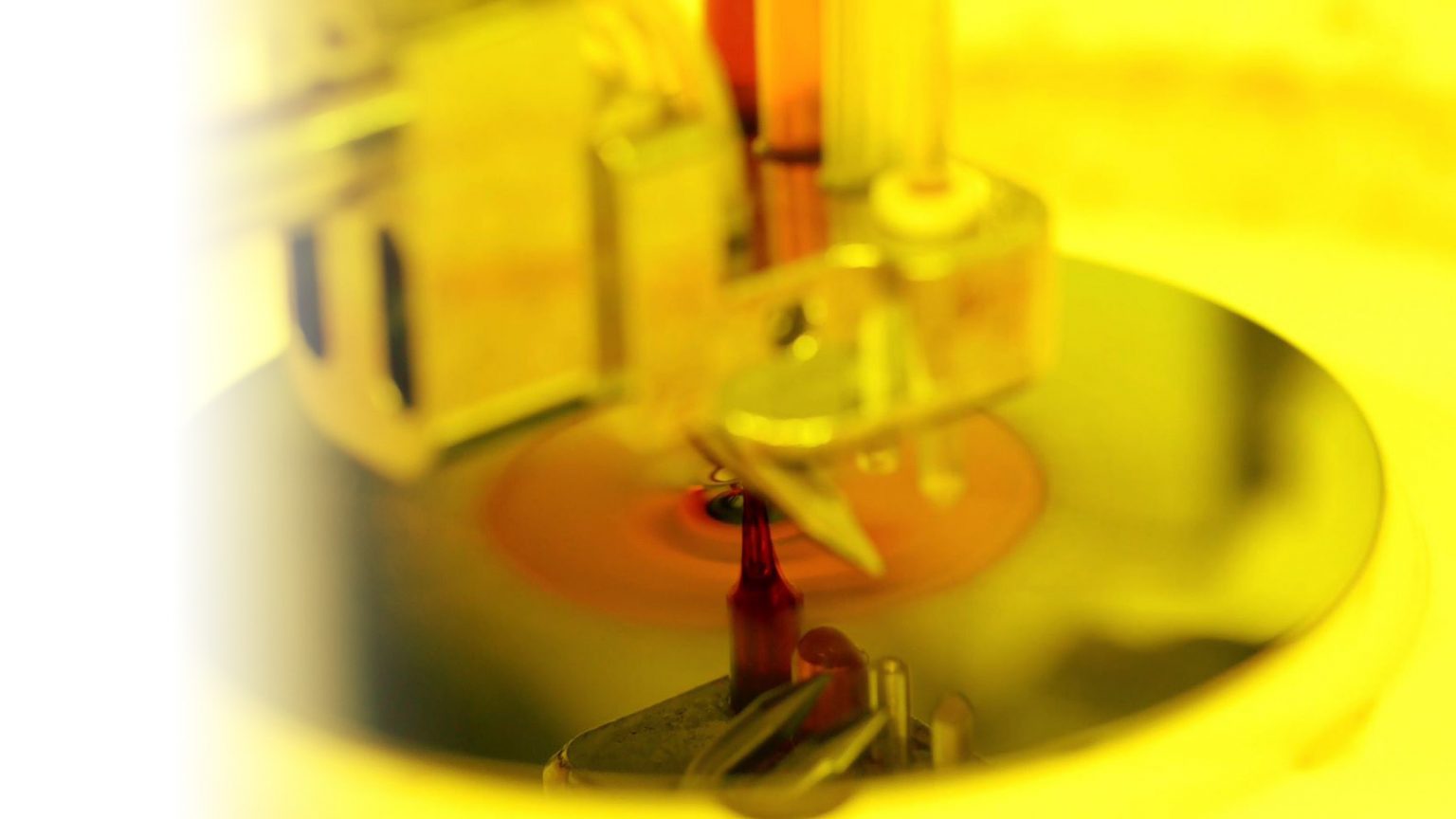Photolithography
Welcome ! Here you should find all the information you need to understand, plan and manage the photolithography steps of your project. If you are new to CMi, please read through all three sections:
– Introduction to photolithography – Theory
– Process flow – Planning
– Photolithography in CMi – Processing
If you wish to dig deeper into certain topics, some links to external resources are provided. The Photolithography team is also available to answer any questions you may have.
– Introduction to photolithography – Theory
– Process flow – Planning
– Photolithography in CMi – Processing
If you wish to dig deeper into certain topics, some links to external resources are provided. The Photolithography team is also available to answer any questions you may have.

Spincoating with photoresist dynamic dispense
1. Introduction
Introduction to photolithography
2. Process flow
Select the appropriate photoresist for your application
Determine which tool you need to use
How to work with small substrates
3. Photolithography in CMi
Photoresist + chemicals
List of photoresist and polymers for spin coating
List of chemicals for photolithography (development, stripping, adhesion promoter, etc..)
Exposure
Guidelines to create your CAD layout/pattern
How to fabricate a mask or reticle (for mask-aligner or stepper lithography)
Photoresist inspection, stripping and descum
Safety
How to work with small substrates (diced rectangle-shaped chips)